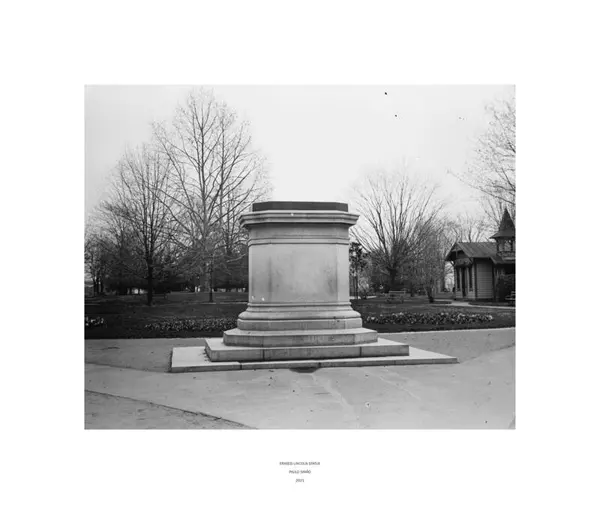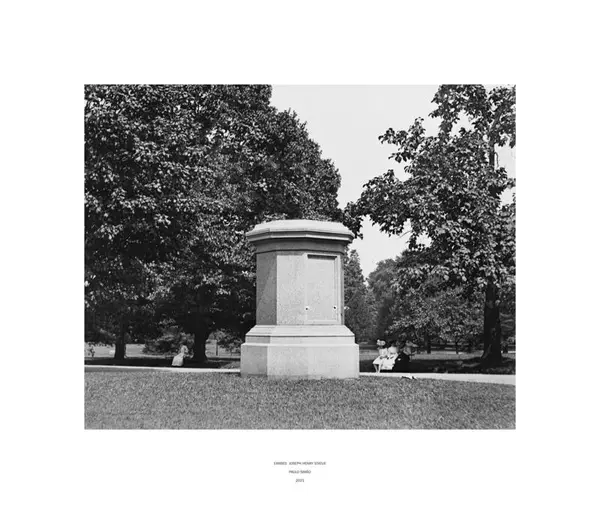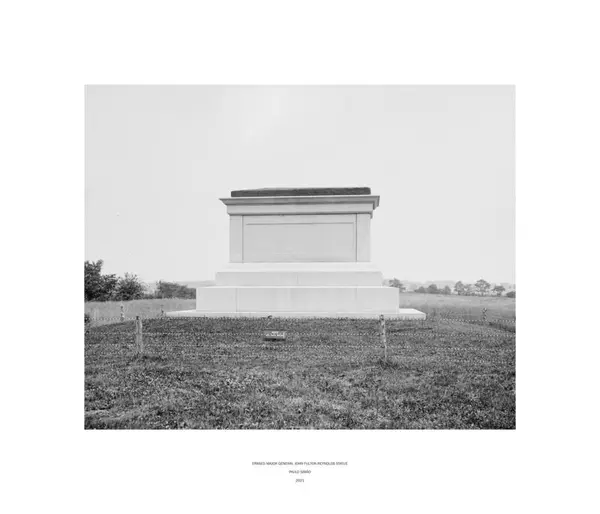- 1/1
© Paulo Simão, Erased Lincoln Statue, 2021
Ved å isolere sokkelen skaper Simão på denne måten et monument som har blitt fratatt kraften til å berøre oss.
- 1/1
© Paulo Simão, Erased Joseph Henry Statue, 2021
Hva gjør vi med monumenter som allerede eksisterer i det offentlige rom, som feirer historiske hendelser som er anakronistiske og kolliderer med samtidens humanistiske samfunnsvisjon? Hvordan håndterer demokratier sin koloniale eller imperiale fortid og historie? Hvilken rolle har skoler, lærere, kulturaktører og media i dagens samfunn?
Serien inviterer oss til å reflektere over vanskeligheten som politiske aktører møter med å komme nærmere innbyggerne, i en verden som blir stadig mer polarisert, og der feilinformasjon gir den perfekte grobunnen for populisme.
- 1/1
© Paulo Simão, Erased Major General John Fulton Reynolds Statue, 2021
Her kan du lese Paulo Simãos prosjektbeskrivelse
In Erased (2021) Paulo Simão evokes Erased De Kooning Drawing by Robert Rauschenberg and, by manipulating a set of images from the US Library of Congress, reframes the archive and develops a series that invites us to a myriad of questions and reflections. Like Rauschenberg, when adding a subtitle to the photographic image, Paulo Simão assumes that he erased to reveal, he took out to add and what has apparently been censored never ceased to be there.
With his intervention Simão creates a kind of anti-evocative monument and, by isolating the plinth, he opens a new perspective and approach to the artistic work, moreover, emphasizes the importance and role that the artist, the artistic work and, in this particular project, the evocative public art piece assumes by validating certain values, knowledge, historical events or collective memories. Finally, this sort of catalogue, that takes us to the photographic universe of Bernd and Hilla Becher, begins to reveal us the red lines, hidden by pixels that are no longer there or have been added as a result of today’s technological possibilities.
Two years after the invasion of the US Capitol we start seeing the questions Paulo Simão want to address. Do we need new monuments and forms of celebration? What to do with monuments that already exist in public space, which evoke and celebrate historical events that are anachronistic and collide with a contemporary and humanist vision of society? How democracies deal with their colonial or imperial past and history? What is the role of schools, educators, cultural agents and the media in today’s society? And finally, invites us for a reflection about the difficulty that political actors face to get closer to citizens, in a world with less and less mediation and how misinformation is the perfect environment for the growth of populism.


